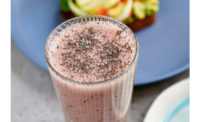Leveraging Sugar, Calorie Reduction Technology for Health
Overcoming negative consumer perceptions regarding reduced sugar, calorie or carbohydrate content

PHOTO COURTESY OF: Tate & Lyle USA (www.tateandlyle.com)
Consumers are studying nutrition and ingredient labels more than ever before. While more than half look for calories, many are specifically zeroing in on added sugars, total sugars, and total carbohydrates.
Likewise, more US consumers have changed their intake of presweetened foods. Most consumers choose to indulge in desserts and similar confections to satisfy a sweet craving, but this can also be perceived as an unhealthy choice. There have been many dessert innovations that attempt to balance consumer cravings and health expectations. But there are preconceived notions — not all of them unfounded — among consumers that the taste will suffer as a result of reductions in sugar, calories, or carbohydrates. In the past, they might have been correct in those assumptions. As many product developers and corporate chefs know, swapping one ingredient for another is not always a piece of cake (pun intended).
Sugar, primarily in the form of sucrose, plays an undeniably important role in baked goods and does a lot more than just satisfy a sweet tooth. Sucrose and water work together in a recipe to maintain moisture so that items such as cakes, brownies, and frostings do not dry out quickly. Sucrose (and to varying extents other non-polyol forms of sugar, such as fructose, lactose, and most others) also is a key driver for the Maillard reaction and caramelization.
The Maillard reaction, which begins around 285°F, is a chemical reaction between amino acids and reducing sugars. It creates the desirable golden-brown color of a cookie from the sugar caramelizing. In this type of formulation, the amino acids that distinguish the Maillard reaction from caramelization come from eggs, milk, and flour. This chemical response also imparts toasted nutty flavors, allowing them to become prevalent throughout the product.
The amount of sugar in a recipe can quickly change the final texture of the product. For example, the type and amount of sugar in a cookie recipe will heavily influence whether the final result has a chewy or crispy texture. In addition, a small amount of sugar in a bread recipe will create a denser crumb. A large amount of sugar will cause a cake or quickbread to rise during baking and result in a light and fluffy texture.
Although sugar plays such an important role in baked goods, formulators can balance the consumer desire for taste and health without the calories from sucrose and other nutritive sugars. Sugar reduction is most certainly achievable with the appropriate ingredient technology. This is where innovations in sweetener technology get their shining moment. For example, allulose is a relatively new ingredient to the market and has been showing excellent promise as an ultra-low calorie sweetener option.
As a “rare” sugar, allulose is found in small quantities in figs, jackfruit, raisins, and other plant sources. Tate & Lyle produces allulose in both dry and liquid forms under the name of DOLCIA PRIMA®. As ruled by the FDA, allulose does not contribute to the total sugar or added sugar count on a nutrition facts panel. It is not metabolized and therefore not recognized as an energy source for our bodies.
In bakery applications, allulose can replace up to 100% of the total sugar in the formula. It is important to keep in mind that this rare sugar has a sweetness perception of 70% compared to sucrose. To help balance the sweetness, high-intensity sweeteners can be a great tool. Clear synergies occur when combining allulose with stevia extract, sucralose, and even monk fruit extract. However, for some formulations, additional sweeteners might not be necessary. Allulose, which chemically resembles fructose, can enhance slightly certain flavors, such as fruit, chocolate, and vanilla.
One of the sugar reduction projects undertaken by Tate & Lyle’s culinary team was creating an “entremet” — a French dessert that is a multi-layered mousse base with complementary flavors and varying textures. For the Triple Chocolate Cinnamon entremets in this project, the layers consisted of a sponge cake, a hard ganache, a crispy layer, a stabilized mousse, and a Chantilly cream.
The goal was to achieve a 30% sugar reduction overall in the finished product, so four of the five standing layers containing granulated sucrose needed a portion removed. To achieve this, more than 30% of the added sugar would have to be omitted to compensate for the added sugars in milk chocolate and dark chocolate. For each of the four formulas, at least 50% of the granulated sugar was removed.
The first stage of building the entremet was to formulate a sturdy base that could withstand multiple layers on top — in this case, a chocolate buttermilk cake. The function of sugar in a cake is imperative to create the light and airy crumb structure that forms while baking. Formulation for the cake began with removing 50% of the formula’s sugar and replacing it with crystalline allulose and TASTEVA® stevia sweetener. Because half of the sugar was removed and the same amount of allulose was added back, the cake fell flat and was very dense when eaten. This happens because, while sugar helps drive air into the fat during the creaming stage that later expands during baking, allulose does not incorporate as much air initially during the creaming stage, which increases the specific gravity and lowers the viscosity of the batter.
In order to compensate, Tate & Lyle’s MIRA-GEL® 463 Instant Starch was incorporated into the batter with the other dry ingredients to provide an instant viscosity for the batter. Increased batter viscosity helps to entrap the air from the mixing process. During baking, the starch stabilized when it was heated and allowed the cake to rise to virtually the same extent as the full-sugar version.
Layered on top of the cake was a white chocolate cinnamon ganache. It was not modified for this project, as there was no additional sugar in the formula. A hazelnut crisp layer was added. Paillete feuilletine brings a crispy and crunchy layer to the entremet and provides an additional opportunity to reduce sugar. In this application, all of the sugar was removed from the formula and replaced with allulose. A high-intensity sweetener was not required because of the inherent sweetness of the milk chocolate and praline paste. The allulose melted with the fats and chocolate and set up as would sucrose. For the final two layers, a luscious aerated and stable milk chocolate mousse along with a cinnamon Chantilly cream completed the entremet layers.
A common formulation error resulting from sugar reduction is the degradation of texture. Sucrose plays a vital role in the final texture of a product such as a mousse. Not unlike the challenges with the cake base layer, problems can arise with irregular crystallization, improper aeration properties, or the inability for the product to set. Each of these were problems that the Tate & Lyle team had to overcome for the final two layers.
The key to making a mousse with rich flavors and a creamy mouthfeel is to first make an emulsion with the chocolate and a portion of the cream. Melting down the hard crystalline fats of the chocolate, the fat from the cream, and the sugar into a liquid form all at once while mixing is the groundwork for a proper emulsion to be stabilized in this application. When sugar is removed from a mousse formula, it will weaken the emulsion. The lack of sugar crystals also can cause the chocolate’s fat to recrystallize irregularly, yielding a waxy mouthfeel.
The weakened emulsion has the potential to cause the mousse to not set properly, which means it will not hold its shape once cut. This specifically becomes an issue for an entremet that must freely stand tall and be cut into individual portions. The solution for creating a reduced-sugar mousse that is stable and will hold its shape when cut is to increase the amount of gelatin in the formula. However, too much gelatin in a mousse can cause the final product to be too stiff and rubbery, versus the desired light and luscious texture that melts in your mouth.
Finally, the cinnamon Chantilly cream had all of the formula’s sugar removed. Allulose was critical to success again, because its functionality in this application is almost identical to the stability capabilities of powdered sucrose in a whipped cream. Powdered sucrose is typically used in a whipped cream formulation because it contains a very minute (but functionally significant) amount of cornstarch that helps stabilize the cream. In this application, allulose performed similarly to powdered sugar due to its fine granulation. Additionally, allulose’s high solubility enabled easy dissolution into the cream and allowed for a smooth, creamy texture that was stable enough to be piped and to continue to hold its shape for an extended period of time.
For the final sweet touch, allulose in combination with stevia created the highly sweet and indulgent Chantilly cream, with a clean sweetness profile and minimal linger.
Just as consumers seek to balance taste and health, formula balance is the key to tackling sugar reduction in bakery products. The functionality of sugar in a specific formulation should be taken into consideration before reducing or removing it completely. The removal of sugar in a recipe will affect the color, flavor, texture, and success of the final product. Understanding product attributes that need to be adjusted when reducing sugar helps when it comes to choosing the perfect solution to deliver a taste experience consumers will love.
Christine Kerekes is a corporate research chef for Tate & Lyle USA.
Looking for a reprint of this article?
From high-res PDFs to custom plaques, order your copy today!





